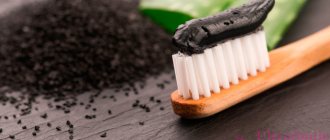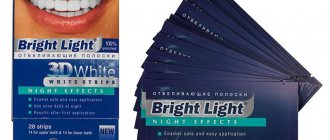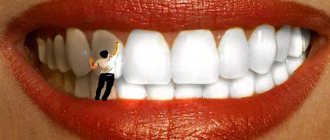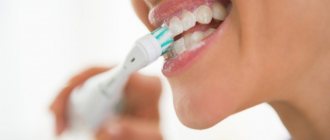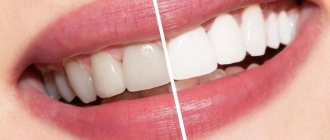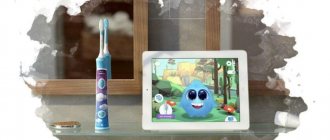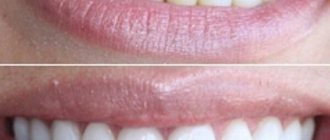Everyone dreams of a Hollywood smile. Owners of slender, dazzling white teeth attract attention and instantly invite communication. But what does this concept actually include? What steps are necessary to form a beautiful smile line?
The very first thing is to correct the bite: even the slightest deviation of any tooth from an even position spoils the overall impression. In more complex cases associated with an unsightly shape, advanced caries, mechanical damage, restorations, implantations, prostheses, as well as veneers, lumineers and ultraneers, which are very popular today, come to the rescue. And the most important stage is bleaching. Unlike the first two situations, which require a visit to a professional dental office, the latter is quite feasible at home.
When choosing a product of this type for the first time, you should understand how the products differ from each other and whether they are effective at all. Conventionally, whitening strips can be divided into 2 categories:
- With hydrogen peroxide. The most effective, but unsuitable for sensitive teeth, because... may cause pain.
- No hydrogen peroxide. More gentle formulas that include natural brighteners (for example, activated carbon, oils and vitamins). But the effectiveness of such products is noticeably lower than that of previous ones.
You should not expect instant results from the strips after the first use. They all differ in speed and duration of action. You need to leave them on your teeth from 10 minutes to 6-8 hours, so before use you should definitely read the instructions, because... It is also undesirable to overexpose the strips. The course can last from 5 to 20 days. And to consolidate the result, manufacturers often advise using toothpastes and mouthwashes from the same line.
How to use the strips:
- Rinse your mouth and blot your teeth with a paper towel.
- Separate the strip from the protective membrane.
- Apply an adhesive layer to the teeth and smooth it, pressing it to the surface as much as possible. It is important not to get the whitening gel on your gums, otherwise you may risk getting a chemical burn.
- Wait the time specified by the manufacturer and remove the strips, or wait until they are completely dissolved, depending on the type of product. Drinking water, swallowing saliva or talking at this moment is not recommended.
- Rinse your mouth to remove any remaining gel and use a brush if necessary.
The procedure must be repeated daily throughout the course. If all the rules are fully followed, within a few days you will notice a lightening of the enamel by 1-2 tones. It is advisable to consult your dentist before use.
Introducing the rating of teeth whitening strips in 2021. 11 best products that were selected by our experts based on consumer reviews and ratings.
There are contraindications, be sure to consult your doctor!
| Rating (2021) | Prices, ₽ | A country |
| 1. Crest Supreme Professional Whitening | from 3300₽ | USA |
| 2. Blend-a-med 3D White Luxe | from 3000₽ | USA |
| 3. My Brilliant Smile based on activated carbon | from 2400₽ | USA |
| 4. Crest 3D White Glamorous White | from 3300₽ | USA |
| 5. BlanX O₃X Flash White Stripes The Power of Oxygen | from 2000₽ | Italy |
| 6. Megami White Xtreme 3D PRO for sensitive teeth | from 1900₽ | Japan |
| 7. On White Stripes Kit | from 1400₽ | Russia |
| 8. Bright Light 3D Bright Night Effects | from 1500₽ | China |
| 9. Global White Charcoal | from 700₽ | China |
| 10. Shomi Time White Express | from 1000₽ | China |
| 11. White Glo Bright Light | from 800₽ | Australia |
Whitening strips Crest 3D White –
Crest strips for teeth whitening (Crest 3D White) - available in 6 different versions. They differ in different concentrations of hydrogen peroxide, the number of strips in the package, and the exposure time of the strips on the teeth. One of the strip options even has a special light source, which apparently should give the consumer the illusion that this product is similar to professional “laser” whitening systems.
But what's really important is that different types of strips hold onto the teeth differently. Some of them can slip on the teeth and do not stick well. When choosing Crest strips, pay attention to the fact that they contain Advanced Seal® technology (allows the strips to adhere firmly to the teeth and not slip on them). Otherwise, the strips will peel off and there will be no close contact of the whitening gel with the enamel surface.
If you have an uneven dentition/crowded teeth, or a pronounced inclination of some teeth, the FlexFit® technology will allow you to achieve good adaptation of the strips to the surfaces of all teeth. In this case, the strips will be slightly elastic (stretch), which will allow them to better adapt to uneven tooth surfaces or uneven dentition shapes. Only Crest 3D White “Supreme FlexFit” strips have this technology. If the strips do not adhere tightly to some surfaces, then the teeth in these areas will remain dark.
When can I smoke after whitening strips?
Smoking after bleaching is contraindicated for at least two weeks, and it is better to endure without cigarettes for a month. This will help not harm your teeth while they are hypersensitive and vulnerable. Before bleaching, you should also abstain from tobacco for two weeks.
Interesting materials:
Whose daughter is Stefania Malikova? Whose caviar is more expensive than chum salmon or pink salmon? Whose song am I tired of wanting love? What do the British often put in tea? What did the Australians give the groom? What's bigger than a gigabyte? What is bigger: Jupiter or Earth? What is bigger: Nikolaev or Odessa? What do rabbits love most? What to take to 1st grade?
Best Premium Teeth Whitening Strips
Premium products allow you to achieve the whitening effect faster and maintain it for a longer time. Despite the fact that the cost of such strips is quite high, home whitening will still cost less than a procedure at the dentist, although the effect will be approximately the same. Below are the best premium whitening strips:
Crest Supreme Professional Whitening
Crest Supreme Professional Whitening
Using these strips allows you to lighten your teeth by 6-7 shades at home. The strips themselves are made of thin flexible material, so the user can calmly go about their business while the active substance eliminates plaque and yellowness. This drug is recommended by US dentists as an alternative to laser whitening. The strips are elongated, so they cover the largest possible area of the teeth. Another distinctive feature of the product is that it can be used 2 times a day for 30 minutes. This will allow you to achieve the fastest possible lightening effect.
| Amount in a package | 42 pcs. |
| Duration of use | 30 minutes 1-2 times a day |
pros
- 21 strips each for the upper and lower teeth;
- There are instructions in English and Russian;
- the whitening composition is completely safe and does not harm the enamel;
- the only alternative to professional laser whitening;
- After a full course of whitening, the enamel brightens by 7 tones.
Minuses
- long course of whitening – 21 days;
- not always available for sale.
Blend-a-med 3D White Luxe
Blend-a-med 3D White Luxe whitening strips
A well-known manufacturer of oral hygiene products produces not only toothpastes and brushes, but also whitening strips. They are very easy to use, but allow you to achieve visible lightening of the enamel without visiting the dentist. The visual effect is noticeable after just a week of regular use, and after completing the full course, the result will last for 12 months. The strips themselves are made of soft material, so they do not cause discomfort when worn.
| Amount in a package | 14 pairs (1 each for top and bottom row) |
| Duration of use | 1 hour for 14 days |
pros
- professional whitening effect;
- long-term retention of results (12 months);
- The set includes 14 strips for a full course of whitening;
- brightening composition safe for enamel;
- The strips are easy to apply and easy to remove.
Minuses
- long duration of exposure – 1 hour;
- high price.
Advantages and disadvantages, limitations
The indication for using inoPro is the presence of a yellow coating.
The popularity of whitening strips among users is due to a number of advantages inherent in them. Among the most significant are the following:
- A positive effect is achieved within a week. During this time, the color becomes lighter by 3-4 tones.
- Availability and ease of use. It is enough to apply the strips to the tooth surface and remove after 30 minutes.
- Safety. The use of whitening components in a minimally concentrated form guarantees the safety of using the product.
The safety of the method does not exclude the presence of some contraindications. For example:
- pregnancy and lactation;
- age under 18 years;
- presence of oral diseases, caries;
- fillings or enamel defects.
Before starting to use the strips, it is recommended to study all contraindications and consult a dentist.
Rules for use at home
How to use teeth whitening strips? The use of whitening strips is carried out only at home, and there must be a supply of clean water (at least 1 glass), it will be needed after using the bleaching agent. Each manufacturer provides their products with detailed instructions, which you must read before use. The features of using different strips differ little from each other and include the following steps:
- brushing your teeth 60-30 minutes before the procedure: it is better not to use a brush immediately before use, because you can scratch your gums a little, and then peroxide will get into the wound and cause irritation,
- you need to take the top strip and peel off the film on one side: this will reveal the inner layer of the whitening gel,
- the strip is applied to the dentition flush with the gum and pressed tightly, with the side with the gel facing the enamel (be careful),
- the free lower part of the strip is folded onto the back side of the dentition and is also pressed tightly,
- the next strip (short) is glued to the bottom row by analogy: the order of gluing may be different - first the bottom, then the top, as indicated by the manufacturer,
- you need to wait a while for the active substances to act,
- remove the strips and rinse your mouth several times with clean water, brush your teeth with a soft-bristled brush.
Gluing is best done with clean, dry hands in a well-lit room. The presence of a mirror is mandatory for the first 3-4 uses.
Side effects and disadvantages of whitening strips –
Reviews for whitening strips on all sites are written as carbon copies; the texts of the reviews are more like advertising brochures that praise the strips from different angles, keeping silent about the shortcomings. And although home whitening techniques can indeed be very effective, teeth whitening strips still have significant disadvantages...
They do not whiten fillings and crowns -
Chemical whitening allows you to lighten only the tooth tissue. Fillings, veneers, and any types of artificial crowns cannot be bleached. This means that if you have fillings or crowns on one or more teeth, then after whitening they will look even darker against the background of the whitened enamel of the remaining teeth (Fig. 14). Whitening in such situations will mean the need to subsequently replace veneers, crowns and fillings with lighter shades.
It should also be taken into account that after a few months, the teeth will gradually begin to darken again (the speed of teeth darkening after whitening is related to your habits, for example, smoking, the frequency of drinking coloring drinks and foods). This may mean the need for either new replacement fillings, veneers or crowns, or ongoing periodic courses of home whitening.
Uneven whitening –
Reviews of teeth whitening strips are often negative due to the fact that although the front surfaces of the teeth become much whiter, they remain dark in the interdental spaces. This creates a sharp contrast between dark and light, and the interdental spaces end up looking like black triangles (Fig. 15). Why is this happening...
Firstly, the thickness of the whitening gel on the inner surfaces of the strips is only about 0.2 mm. At the same time, the surface of the teeth is not absolutely smooth, and therefore, when adapting the strips to the teeth, the whitening gel simply does not penetrate sufficiently into the interdental spaces. The second reason lies in the uneven position of the teeth, for example, when they are crowded. In this case, adapting the whitening strip to teeth located deeper (lingually) will be very false, which will mean poor contact of the whitening gel with these teeth.
Thirdly, the problem is that most people use Blendamed or Crest whitening strips without first removing plaque and plaque from the dentist. The fact is that the surfaces of teeth covered with pigment plaque whiten a priori much worse, because coating on these areas will prevent hydrogen peroxide from penetrating into them. And therefore the surface of the teeth in these areas will remain dark.
Pain and sensitivity of teeth -
Clinical studies by Cooperetall in 1992 showed that the penetration of free radicals into the dental pulp occurs within 15 minutes after applying 3% hydrogen peroxide gel to tooth enamel. It is this process, as well as a certain degree of demineralization of enamel and dentin, that leads to the development of increased sensitivity of teeth after whitening.
Sensitivity is expressed in the appearance of pain to thermal stimuli (heat, cold). And the longer the bleaching course continues and/or the higher the concentration of hydrogen peroxide, the stronger the sensitivity will be every day. In this case, you can start using special pastes to relieve sensitivity, or reduce the exposure time of the strips on the teeth, or start using them every other time. And after completing the whitening course, it is worth taking a course of remineralization or fluoridation of teeth.
Important: if you have erosions, carious lesions, deep wedge-shaped defects with exposed dentin on your teeth, then you can predict a very high rate of hydrogen peroxide entering the dental pulp (neurovascular bundle) - with the development of severe pain, and even a chemical burn of the pulp , which may then even require removal of the nerve from the tooth. Therefore, caries and wedge-shaped defects must be cured before using whitening strips (24stoma.ru).
Burns and inflammation of the gums, throat irritation -
About half of all patients also complain of sore gums after using whitening strips. The fact is that the whitening strips have a straight shape - in contrast to the gum line, and therefore, when applying the strips to the teeth, they always come into contact with the interdental gingival papillae. As we said above, the strips are coated with a gel with hydrogen peroxide with a concentration of 5.25 to 14% (10% on average), which contributes to the development of a chemical burn of the gums.
Inflammation and burn of gums after whitening –
But gel with hydrogen peroxide can cause harm not only to the gums. The whitening gel is located in the moist environment of the oral cavity, so some of the hydrogen peroxide necessarily gets into the saliva. This means that hydrogen peroxide will affect not only the interdental papillae, but also other areas of the gums and the tongue. In addition, when you swallow saliva, hydrogen peroxide will contact the mucous membrane of the throat, causing irritation. To reduce such side effects, always rinse your mouth after removing strips, reduce exposure time, or use strips with a lower concentration.
White spots on teeth -
When you remove the whitening strips, you can often notice white spots appearing on the enamel. In most cases this is not a problem, because... occurs due to drying out of the enamel area due to the fact that the strips isolate the front surface of the teeth from contact with saliva. Such stains disappear after a few hours (after the enamel is saturated with moisture).
However, if you use low-quality whitening strips (the whitening gel will have an acidic pH), you can end up with chalky white spots on your enamel that will last a lifetime. This can also happen if the enamel of your teeth has poor resistance to chemical and mechanical factors, which occurs against the background of demineralization of the enamel. Generalization means that your enamel contains very little calcium, i.e. as if porous.
If there are white chalky spots on your teeth even before whitening, then this is one of the signs of enamel demineralization, which means that any type of chemical whitening will be contraindicated for you. The use of chemical bleaching against the background of enamel demineralization will lead to an even greater loss of calcium from dental tissues, which will increase the risk of tooth decay (as a result of increased abrasion or the development of caries).
Important application details
Remember that, firstly, the whitening gel contains an aggressive chemical - hydrogen peroxide (albeit in a small concentration), and secondly, after the procedure, the teeth lose part of their natural protective film and they need time to recover. Given these features, the following rules must be observed:
- after brushing your teeth and before the whitening procedure, you can’t eat anything, you can only drink plain water,
- throughout the course you need to switch to a “white diet”: exclude brightly colored foods and drinks, black coffee, strong tea, berries,
- quit smoking or reduce the number of cigarettes to a minimum, because the enamel may darken again,
- do not expose your teeth to extreme temperatures, and also avoid combinations of hot and cold: for example, do not drink ice cream with a hot drink,
- It is not recommended to use bright lip cosmetics or toothpaste with dyes with an abrasiveness higher than 70-100 RDA,
- when the strips are glued to the teeth, it is not recommended to drink, eat, or talk a lot to prevent ingestion of the whitening component: although some manufacturers indicate that all these actions are allowed with their strips, dentists do not consider them completely safe,
- After the procedure, you can drink water, you cannot eat for 2 hours,
- strips are used once, after which they must be thrown away,
- Do not leave sachets or used strips within reach of children or pets.
You should not swap stripes – i.e. do not stick a short one on the top row and a long one on the bottom row. And the point is not at all that the whitening gel will be poorly distributed, but that the strips will stick much worse. After all, they are made taking into account the curves and height of the dentition.
Good to know! Before whitening, it is recommended to undergo professional oral hygiene to remove accumulated stone and plaque. Otherwise, the teeth may whiten unevenly (there will still be dark areas and “growths” of stone near the gums). If your teeth hurt after whitening strips, then you definitely need to undergo remotherapy - strengthening the enamel. In general, remineralization should be carried out in every good clinic after professional hygiene.
How to use teeth whitening strips
Last updated: 10/29/2021
Over time, teeth acquire an increasingly distinct yellow tint, which is not to everyone’s taste, because it is difficult to come up with something more bewitching and attractive than a snow-white smile. Unfortunately, achieving, and most importantly, maintaining it is not so easy - there are so many temptations around. Coffee, tea, wine, berries, lemonades and other products significantly affect the color of enamel. The situation is aggravated by smoking, as well as poor oral hygiene.
If you notice that your teeth have become darker and want to correct it, don’t despair. Today there are many convenient and affordable ways to solve this problem. One of the most popular options among home procedures is whitening using special strips. Their advantages are simplicity, safety, relatively low price and the ability to take everything you need for the procedures with you, for example, on a business trip.
But before you start whitening, you need to familiarize yourself with the rules for using strips. This will not only help you avoid common mistakes, but will also increase the effect of these funds.
We suggest you read some simple but important tips.
Answers to popular questions
Are inoPro strips safe for teeth?
Based on the research conducted by the Central Research Institute, it can be concluded that the product is safe to use (subject to the instructions and recommendations). The enamel is not damaged (exposure time to the active substance is 30 minutes). If you have high tooth sensitivity, the procedure time can be reduced to 20 minutes.
Can they be used with crowns, fillings and veneers?
This whitening option can be used by those who have crowns, veneers or fillings installed. The strips have the ability to restore the original color of artificial surfaces.
Can it be used during pregnancy and breastfeeding?
Despite the fact that there is no confirmed data on the negative impact of the product on the condition of the fetus or mother, experts do not recommend teeth whitening using the inoPro method for pregnant and lactating women. If a decision has been made to use flat pads, it is necessary to consult a dentist and gynecologist.
Do I need to brush my teeth before the procedure?
You can brush with toothpaste no earlier than an hour before whitening. Immediately before applying the product, it is recommended to rinse the mouth with warm water. The best time for the procedure is considered to be the evening, after dinner.
How to use inoPro strips
To make the use of inoPro whitening strips safe and achieve the desired effect, it is important to follow the instructions for use.
- Open the package immediately before use. When the active substance comes into contact with oxygen, it is activated.
- Apply the strip to the upper and lower teeth along the gum line.
- The strips should remain on the teeth for 30 minutes. It is during this time that the active substance, oxidizing, removes plaque. The substance also has the ability to penetrate the enamel, which helps eliminate age spots.
- After the required time has passed, remove the product and rinse the mouth.
The time during which a positive result can be seen depends on the individual characteristics of the person, including the initial shade of plaque and the presence of pathologies on the dental surface.
